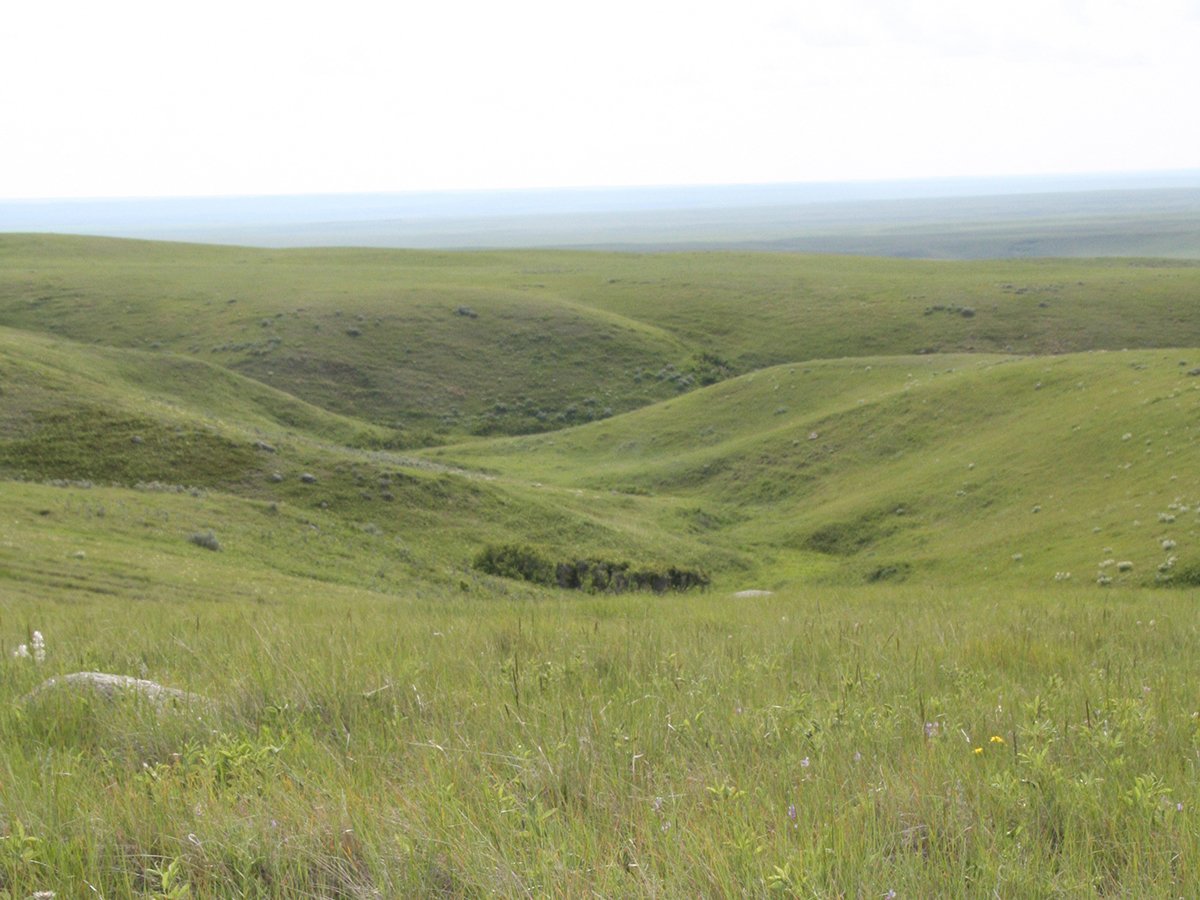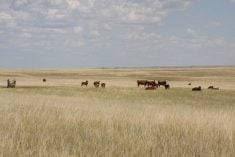In one of the driest and most unpredictable growing regions in the world, irrigation and water management could become the most important form of risk management farmers employ.
That truth is becoming more obvious as farmers’ need for financial stability collides with others’ demands that farmers farm more sustainably and with fewer greenhouse gas emissions. But if governments and others want farmers to leap ahead in water management, they might have to pay for it.
Everybody knows that irrigation produces bigger and different crops in dry regions than conventional farming. There’s only a tiny amount of irrigation on the Prairies, but where it’s used, the impact is enormous. Whether it’s along Manitoba’s rivers, beside Saskatchewan’s Lake Diefenbaker, or in southern Alberta’s well-developed network, big and high-value crops create exponentially more value out of the same number of acres as production in the surrounding dryland farms.
Read Also

Alberta irrigation project on grasslands approved
Environmental concerns raised by Alberta conservation groups over irrigation expansion project within rural municipality
But that’s not the most important benefit that irrigation brings to farmers and the rest of Canadian society.
Irrigation, to agricultural investors, is all about risk mitigation. That’s why, according to Margo Jarvis Redelback, Alberta hosts so many food processing facilities and their thousands of workers.
“The bigger reason they locate in Alberta is because of the reduced risk that comes from a consistent, high-quality agricultural product that’s grown under irrigation,” said Jarvis Redelback, executive director of the Alberta Irrigation Districts Council, in a March 22 Canadian Agricultural Policy Institute panel discussion.
Dryland prairie farming is a crap-shoot based upon the dice roll the weather throws each growing season. It’s a relatively low-investment style of farming, with high rewards if things work out but serious losses if they don’t.
Western Canadian farmers have learned to farm within its confines for more than a century, becoming experts in farming on the edge. It’s a hair-raising form of agriculture that would spook producers in more temperate regions, but prairie farmers have become comfortable managing production risk like few other commodity producers on the planet.
Climate change might make that harder to pull off. Actually, it’s certain to. If the weather’s volatility increases, as we’re told is inevitable, all the advances in crop management, rotations, technology and knowledge might not be enough to keep up. Water, whether there’s too little of it or too much, has been the limiting factor in western Canadian agriculture. Limiting that limitation is one of the crucial benefits water management allows farmers.
Irrigation is one of the most obvious systems we employ.
But it ain’t cheap or easy to install. Hence its minimal uptake on the tens of millions of acres of arable land on the Prairies. Less than five percent of Alberta’s often-parched farmland is irrigated. Much less is irrigated in other provinces.
There are big plans to expand irrigation in Saskatchewan, as there are in other farming areas. The potential is obvious to everyone, but paying for it and making it pay is always the stumbling point.
Farmers will pay for water management if it pays off in better profitability and stability. Just look at the drainage work thousands of farmers have employed over the decades. Stand back in awe when looking at the vast sums individual farmers have invested in adding tile drainage to their fields, allowing water to drain, and holding back water for dry periods.
But investing in irrigation is another step up the ladder of commitment. Traditionally, it’s taken a lot of government money to make it happen.
Sometimes it hasn’t worked out. Much of the irrigation infrastructure around Lake Diefenbaker was essentially wasted for decades because farmers couldn’t see a way to make it pay. This led one frustrated Saskatchewan government to try to make something happen, creating a network of high-cost potato storages and thousands of acres of production that ended up in a public investment train wreck.
But the idea that farmers probably won’t create big new irrigation systems themselves is sound. The investment is just too high and the financial risk too great.
Most of the benefits of irrigation accrue to society at large, rather than farmers. When high-value, dependable crop production occurs, processors and food producers set up shop and spin off those crops into jobs, development and taxes.
Jarvis Redelback pointed out that only 4.4 percent of Alberta’s farmland is irrigated, but it produces about 27 percent of the province’s crop production value. Big processors continue to invest in the area, bringing much wealth to southern Alberta.
Alberta’s present irrigation system is growing and improving, moving more and more of its water out of canals and into pipelines. Farmers are leaving behind low efficiency systems for higher-efficiency, higher-cost systems that make each litre of water produce more crop.
But for the big leaps in irrigation that this western Canadian economy and society need, we’re going to need to figure out how to get the infrastructure built, paid for and managed so everybody wins.
Farmers benefit from irrigation because it reduces production risk, but the financial risk has been too overwhelming for much to happen. Farmers have invested much on simple water management on their farms, but bigger systems will need more players and more money.
With climate change, the potential and need for water management has grown dramatically, but we’re still a long way away from making most of these water management and risk reduction potentials a reality.
I’ve been writing a lot lately about the new Canada Water Agency, which will be based in Winnipeg, where the waters of the Red and Assiniboine rivers are high right now and where we’ve survived consecutive years of drought.
Figuring out how to get water management and irrigation across millions more of Western Canada’s acres would be a worthy first mission for it to embrace. It’s not something that’s just going to happen by itself.


















